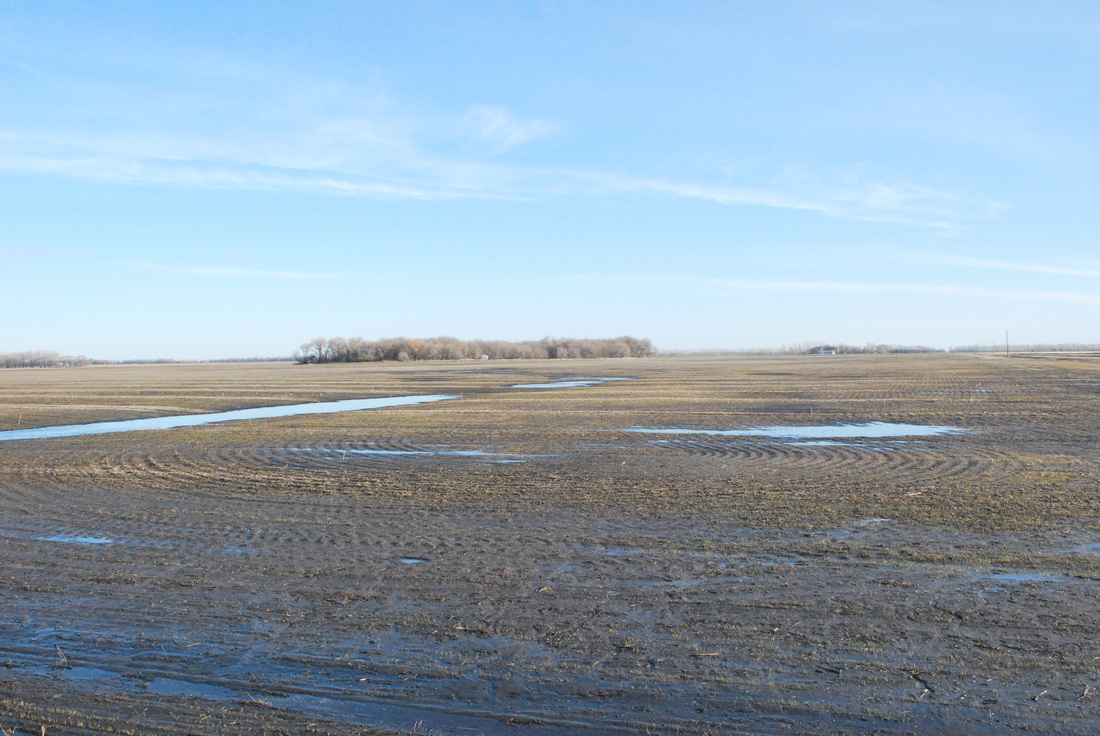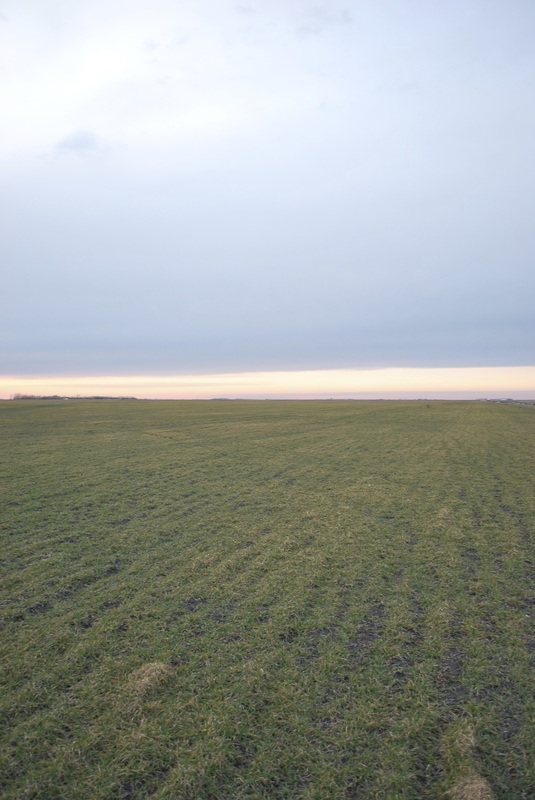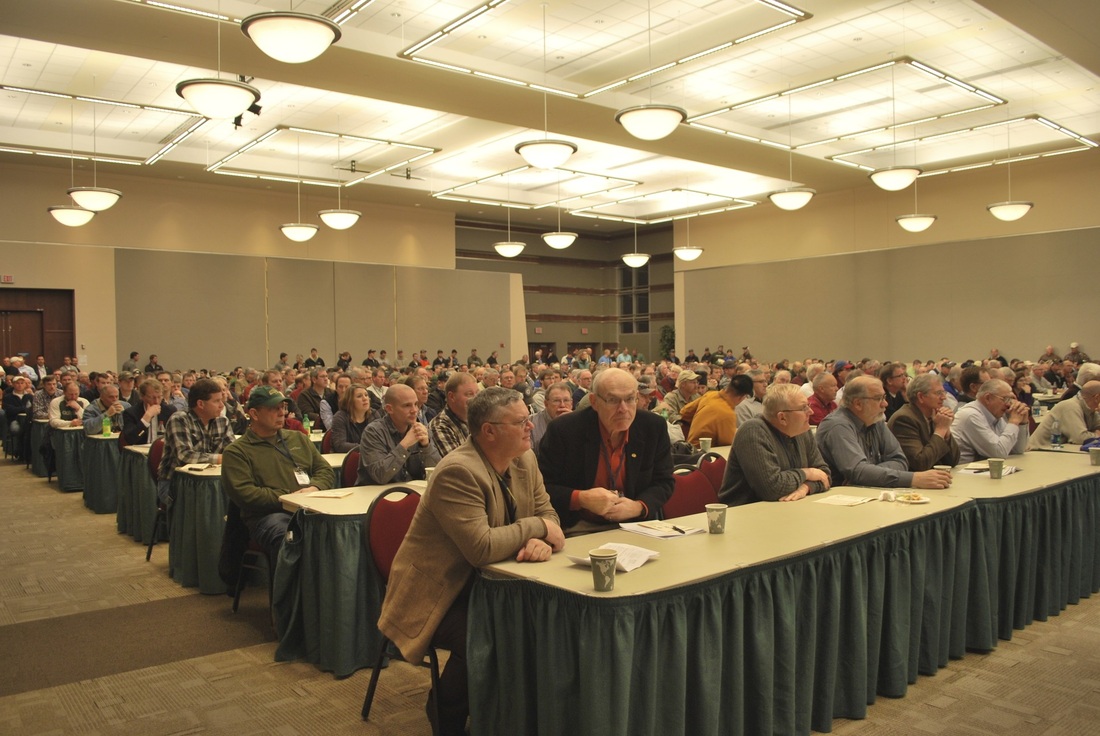It can be difficult to grow winter wheat this far north (40 miles south of Canada), and if you do, you are supposed to seed it directly into canola or flax stubble so it catches the snow and gets insulated during the cold winter. A good blanket of snow will help avoid winter kill.
But we don't follow any of the agronomic advice. Instead, we seed our winter wheat after navy beans, and navy beans don't leave much residue. The field is almost black when we seed the winter wheat, with very little residue, and nothing to catch the snow except the short little winter wheat seedlings. Since navy bean harvest can run into October, we often seed later than the recommended seeding date as well, so the seedlings can be quite tiny. So we seed our winter wheat later than we should, and we seed it into fields with no stubble.
Our winter wheat is never supposed to survive, but we seed it for conservation purposes. Since navy beans leave very little residue, the field is at risk for erosion. When the winds begin to blow in the spring, we don't want a dust storm on our field. Keeping that top soil in the field is so important, and that is why we plant the winter wheat. If it survives the winter, and we get to harvest it the next year, that's a bonus.
We've been very lucky to have such success growing winter wheat. At first we were shocked when it did survive the winter and then we kind of got comfortable and assumed it would always survive. That is not the case and 2013 reminded us that the primary purpose of the winter wheat is conservation, and the bonus is profitability. This year we cannot collect the bonus.
We had a horrible dust storm last week, and the winter wheat did help keep our top soil in place. Most of the wheat was dead, but imagine dead grass in your yard. The dead wheat still provided a layer of protection, and helped minimize the amount of top soil that was blowing.
Not all of our fields are susceptible to blowing, but winter wheat has been great for some light and sandy fields. It's hard to drag out the airseeder in the fall, and find time to get the crop planted when you're harvesting sugar beets, and working on fall tillage, but somehow it gets done, and in the spring you are grateful. I hope we can harvest winter wheat in 2014.
As for crop insurance, we cannot insure winter wheat. Even federal crop insurance knows winter wheat isn't supposed to survive in our area. Instead, they send an adjustor in the spring, and if the winter wheat stand looks adequate, we can insure that field as spring wheat. This year the adjustor estimated our field at 4 bushels to the acre, and uninsurable. We hope for a 60 bu/a minimum, so there was no question as to whether or not the field should be destroyed. There was nothing there, so at least it was an easy decision.
Destroying our winter wheat is disappointing but not devastating. Now we just need to focus on finishing our planting. Wheat, soybeans and navy beans remain, and the calendar days are slipping by quickly.



 RSS Feed
RSS Feed